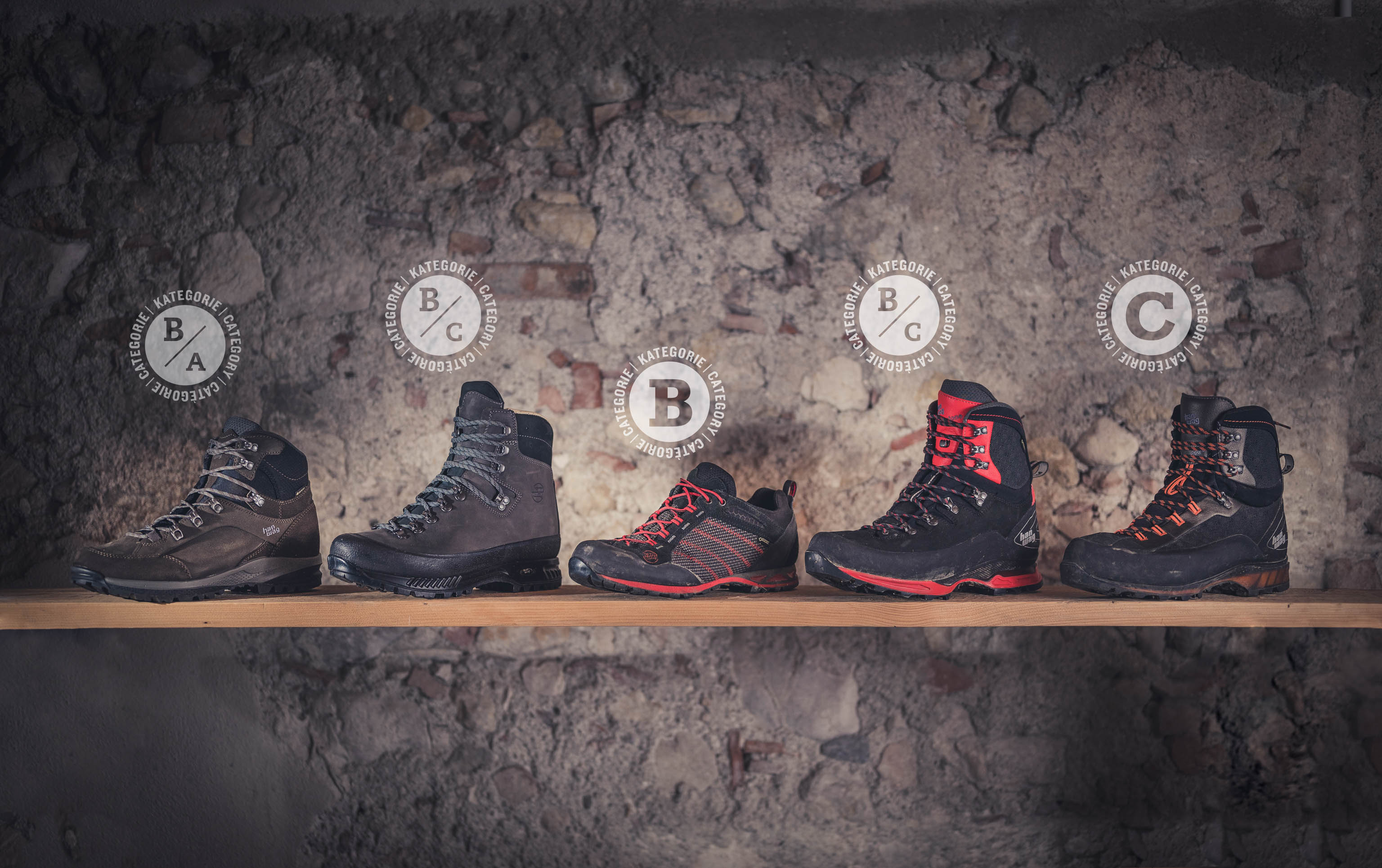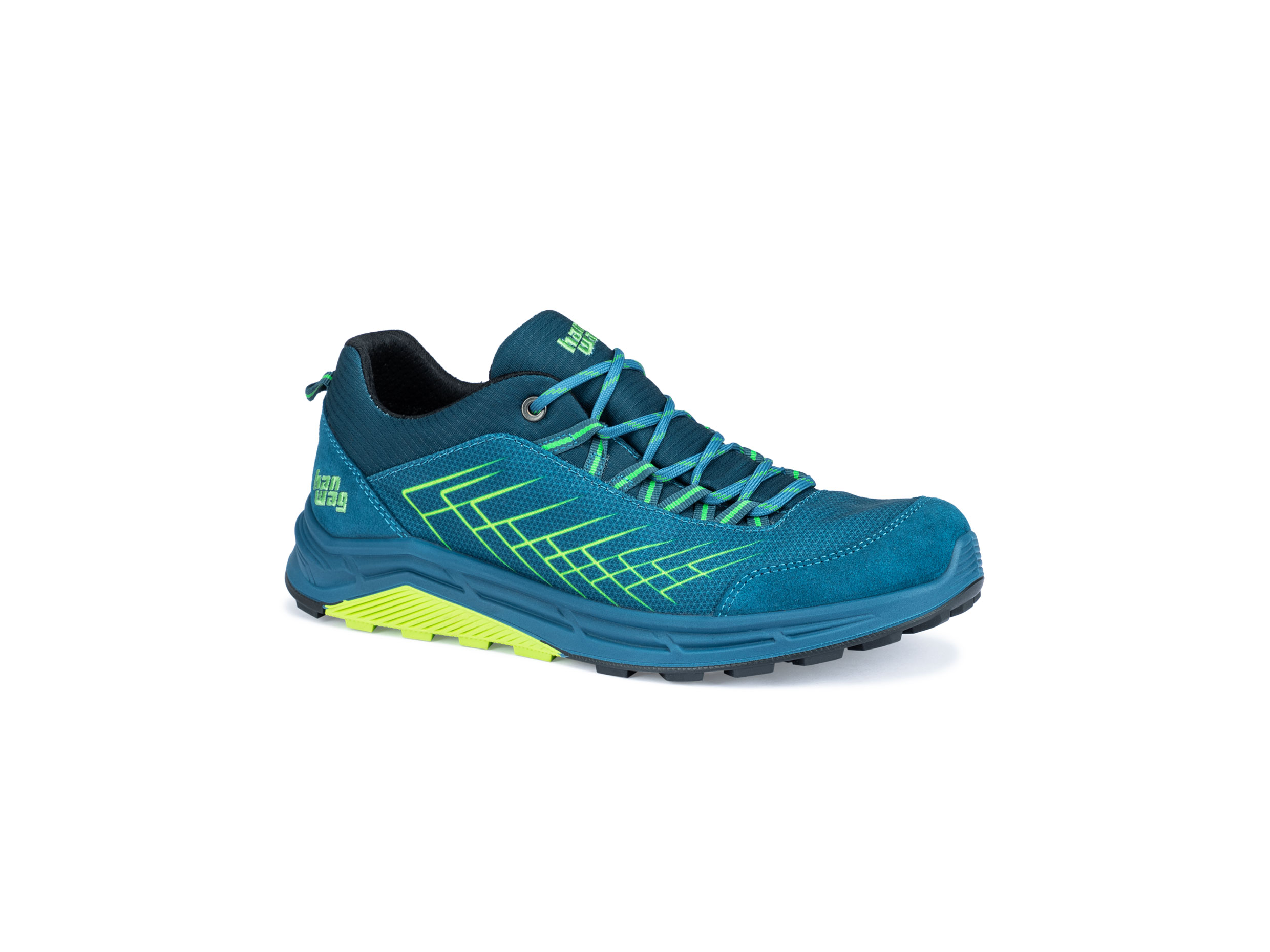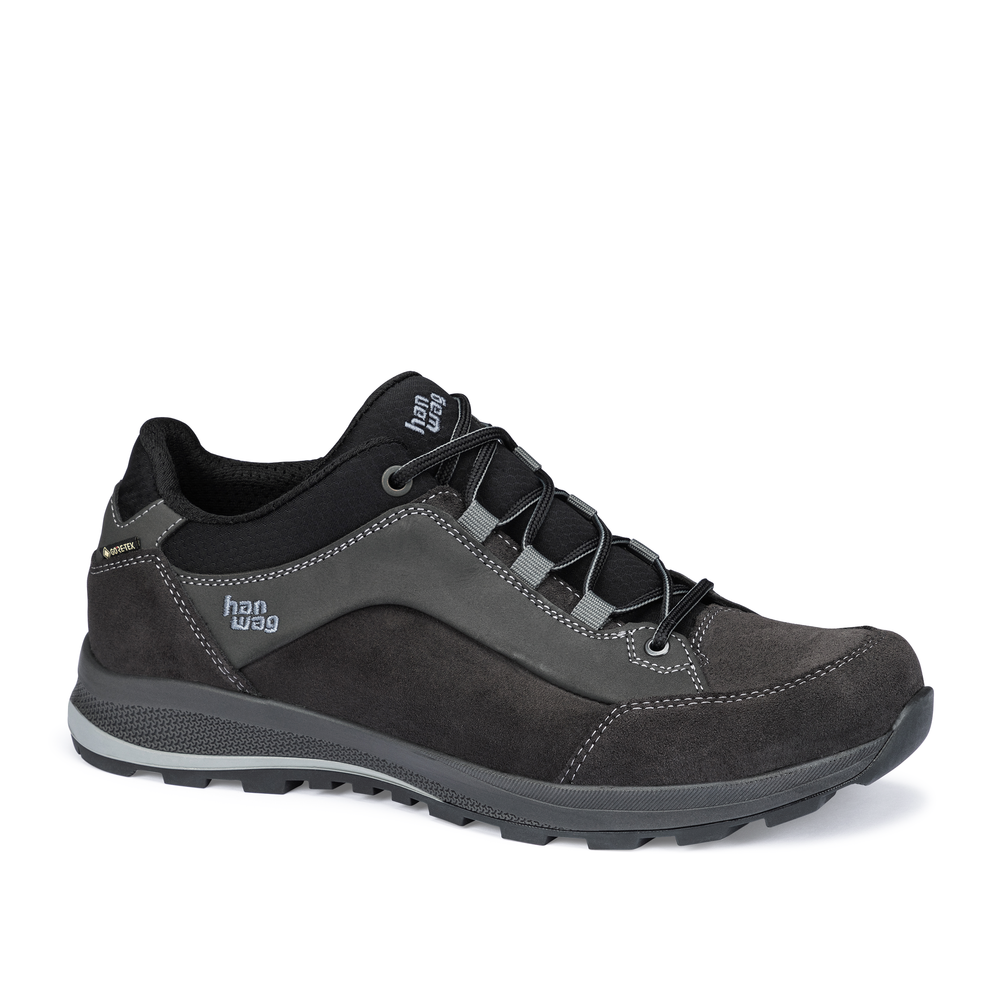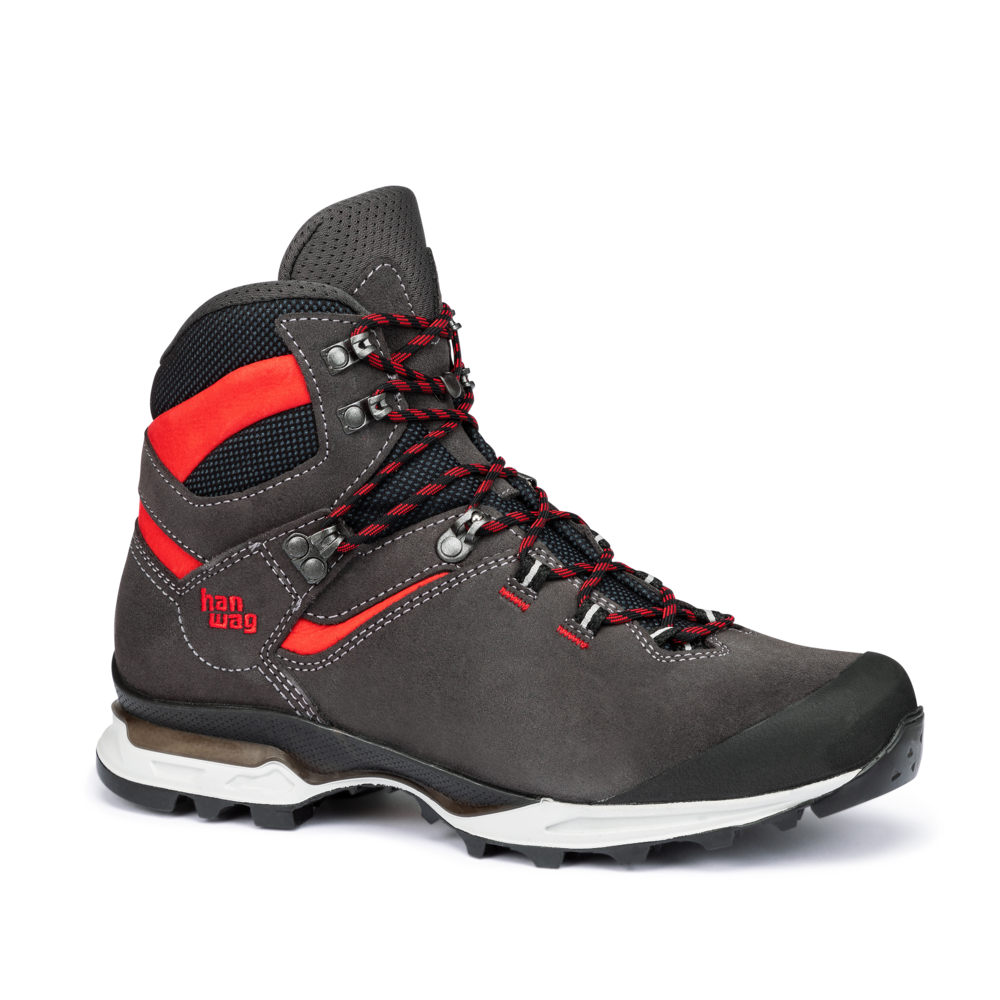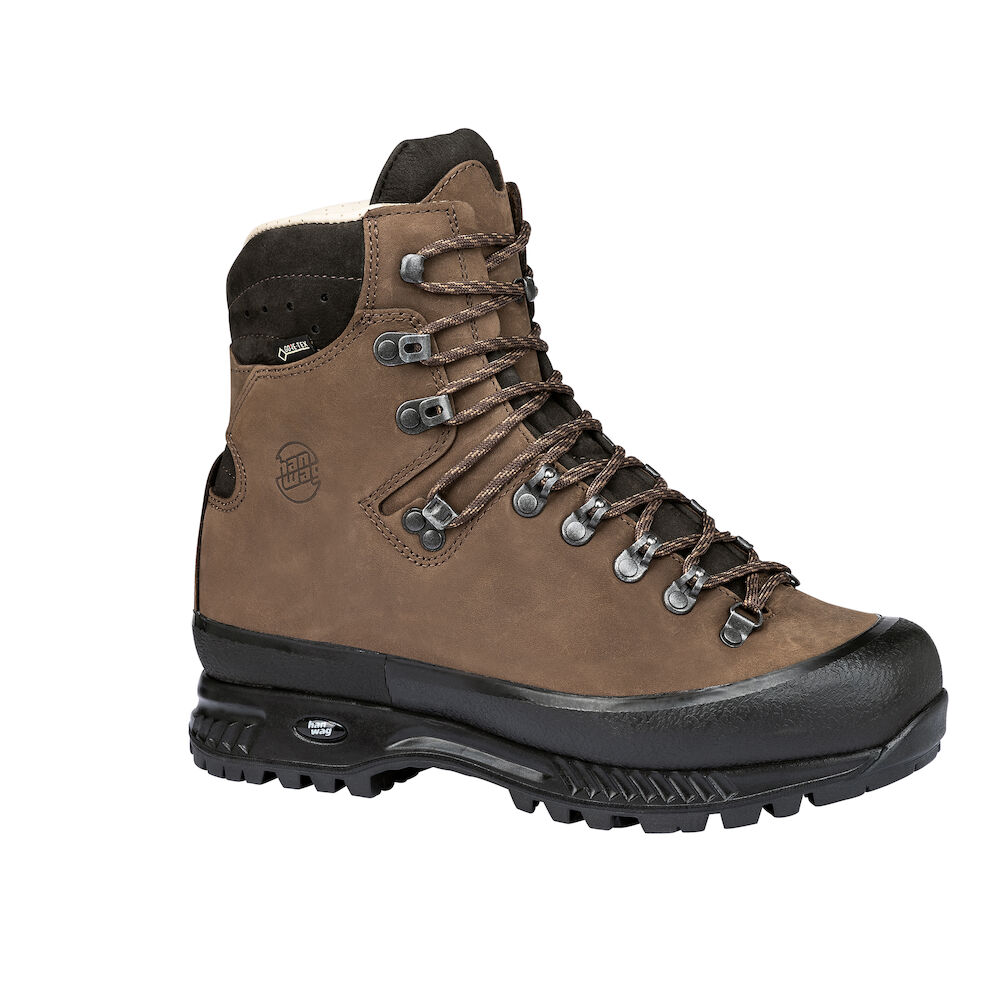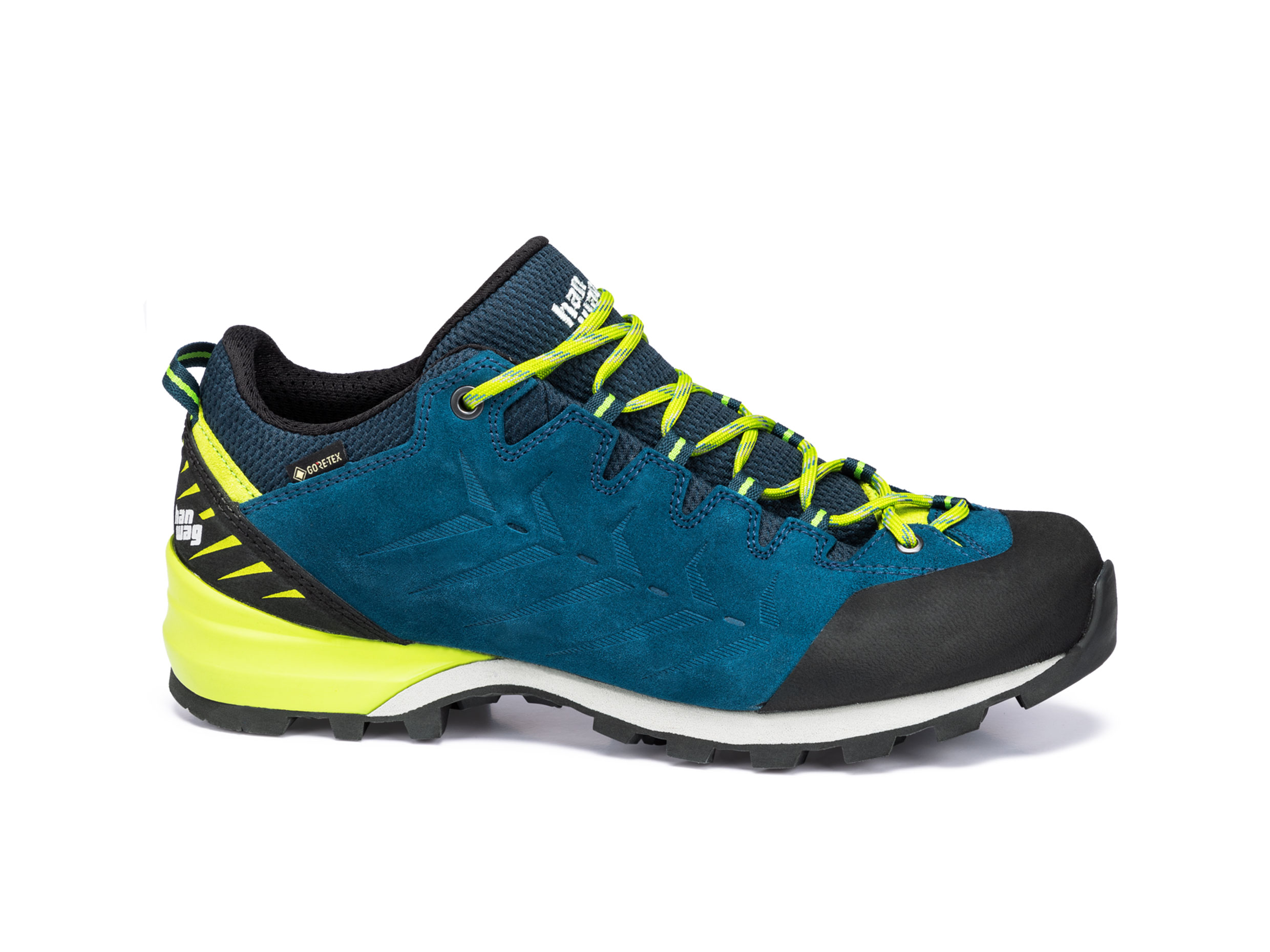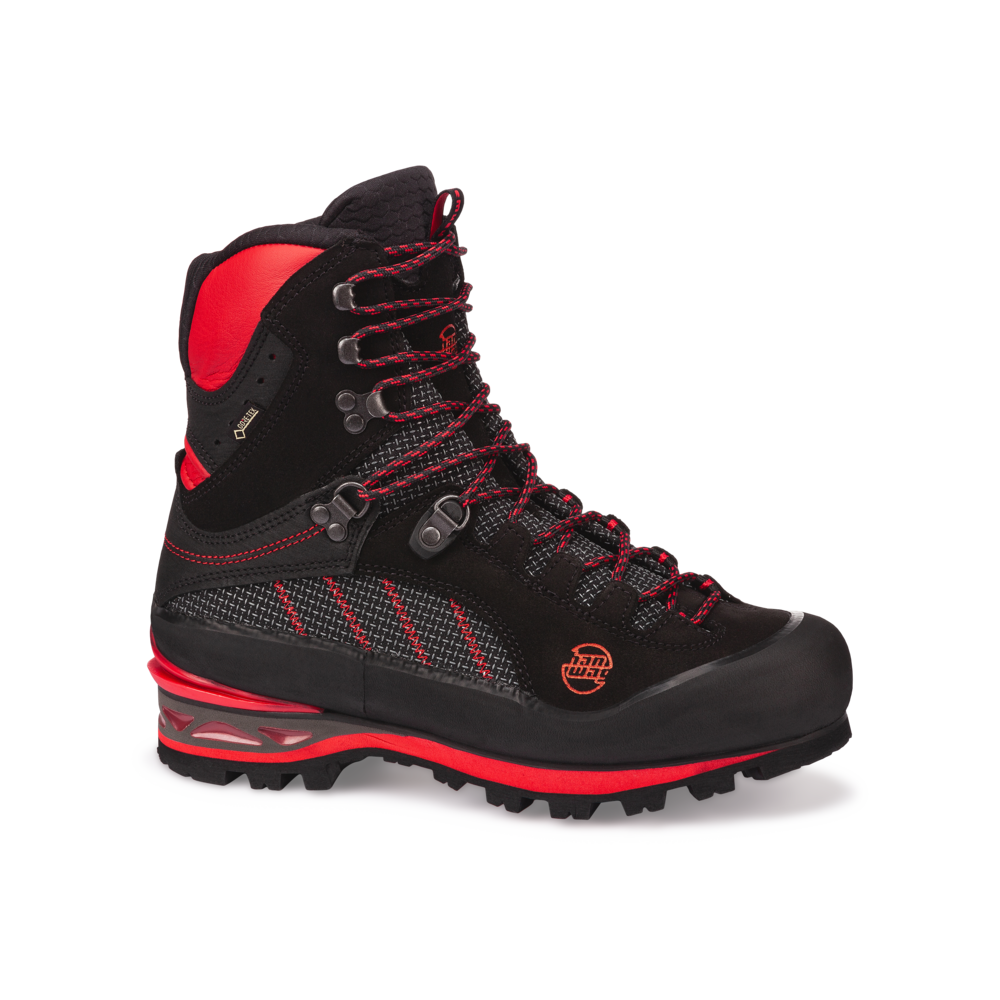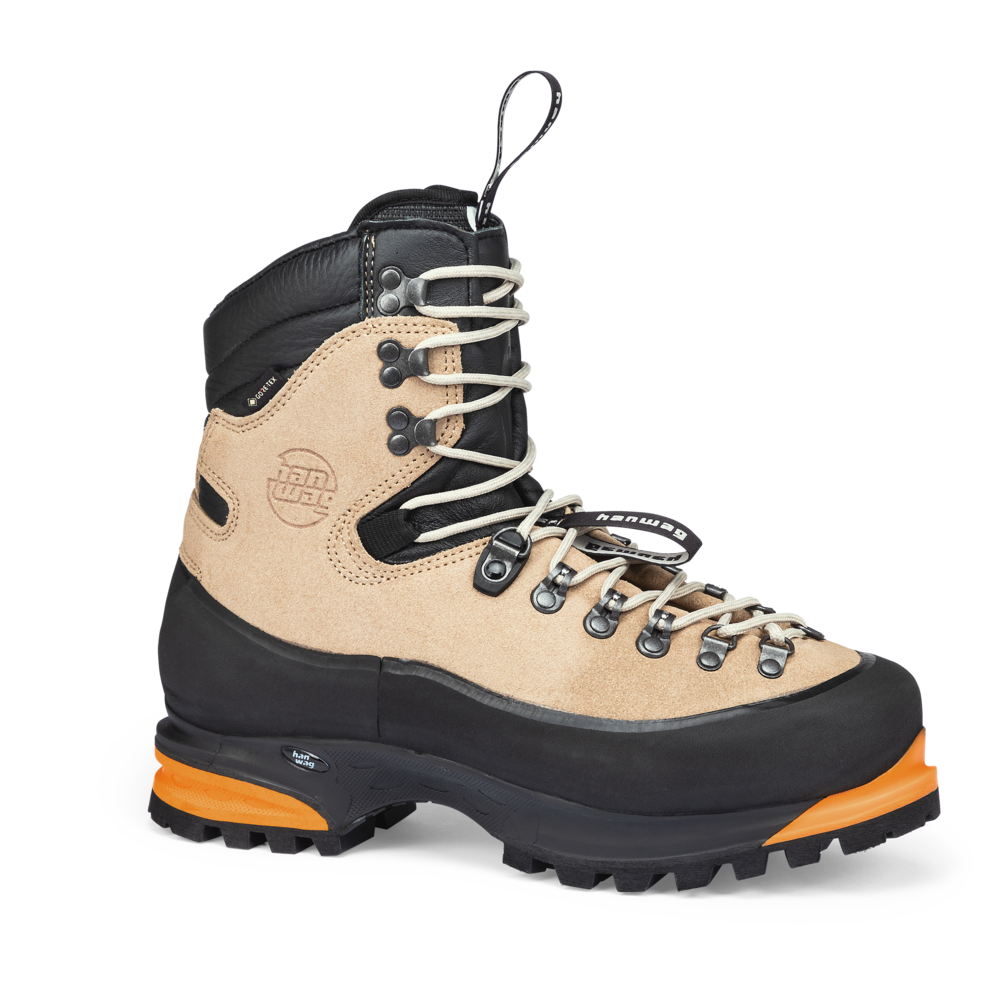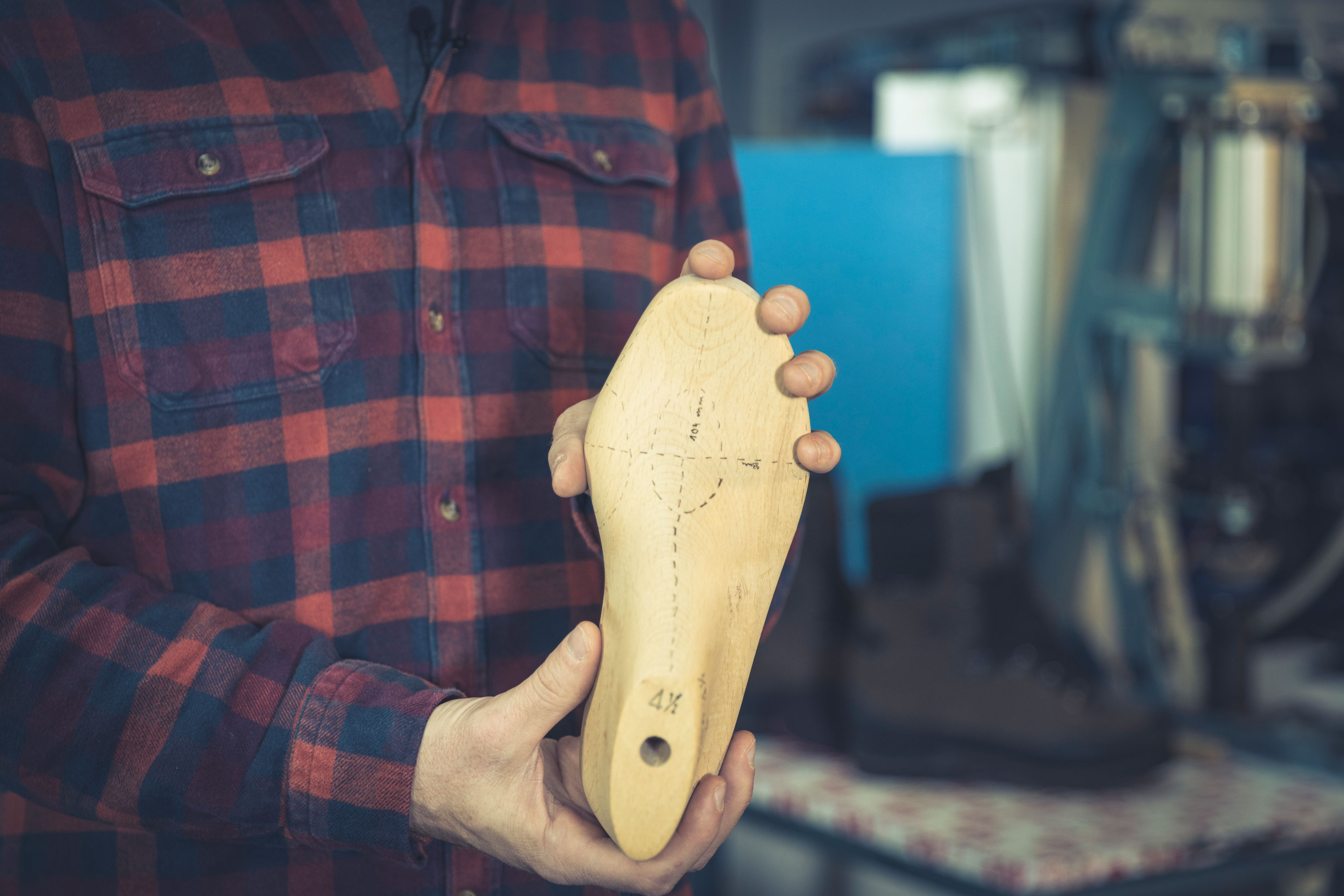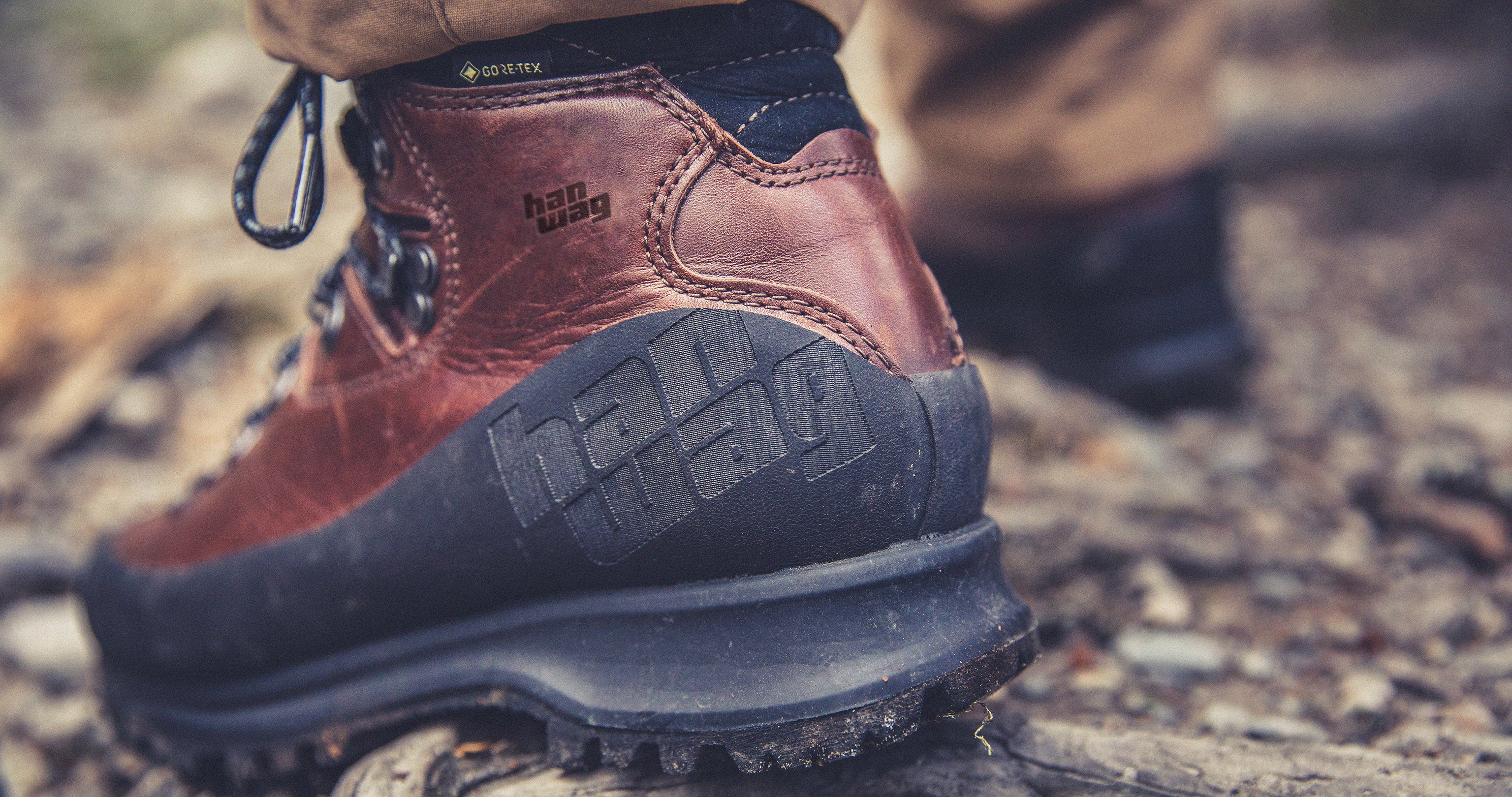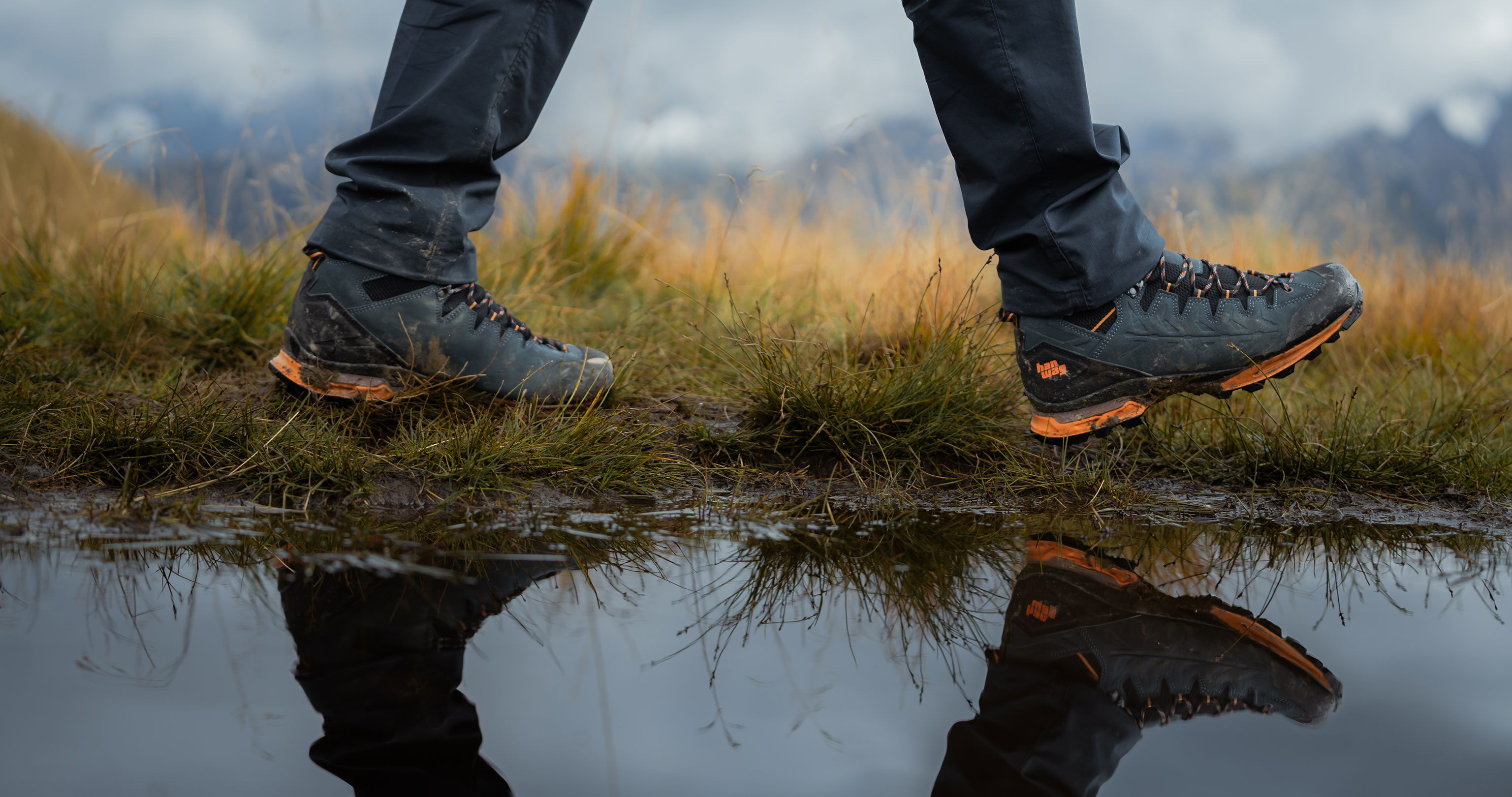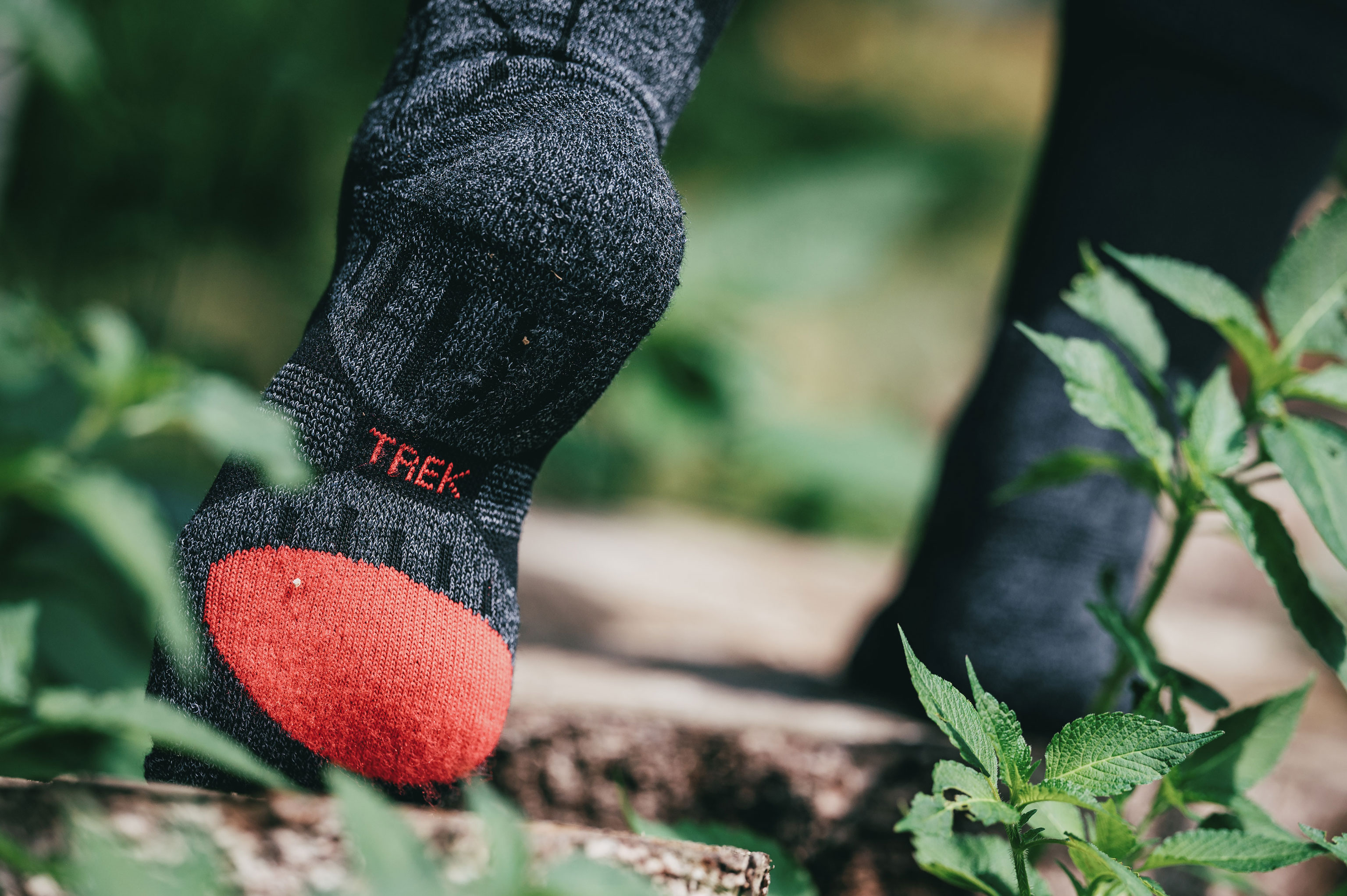Updated on
-
Sneak Peak – The 5 Key Tips
- Hiking boots, hiking shoes and mountain boots can be grouped into the categories A to D according to their area of use.
- The main criteria is the torsional stability of the sole.
- Category A hiking footwear has more flexible soles and softer, low-cut uppers.
- Category D applies to mountain boots with stiff soles and high, sturdy uppers.
- Category C footwear can include special exceptions, such as low-cut approach shoes with stiff soles.
For more in-depth information, read the whole article.
- How to choose hiking boots – Categories A to D
- Hiking boots vs hiking shoes - category overview
- Special case: Category C mountain footwear
- What are lightweight hiking boots?
- Which boots are right for me?
“I’m going to buy a new pair of hiking boots.” Maybe easier said than done. So, how to choose hiking shoes? You might find yourself in a retail store or webshop facing a huge selection. There are lightweight hiking boots, lightweight trekking boots, low-cut, mid-cut and high-cut models. How to choose walking boots?
We don’t intend to go too deep into the science of hiking boots here (although as bootmaking experts, we could ;-). Instead, in this buying guide we want to provide a clear overview of the main types of hiking footwear and explain the difference of hiking boots vs hiking shoes.
The fact that different manufacturers use different vocabulary sometimes makes things confusing. One brand might refer to hiking boots, while another might call them trekking shoes. The same applies to some retailers. One shop might talk about lightweight trekking footwear, while another might refer to lightweight mountain boots.
However, if you are wondering how to choose hiking boots, then this is where hiking boot categories can help.
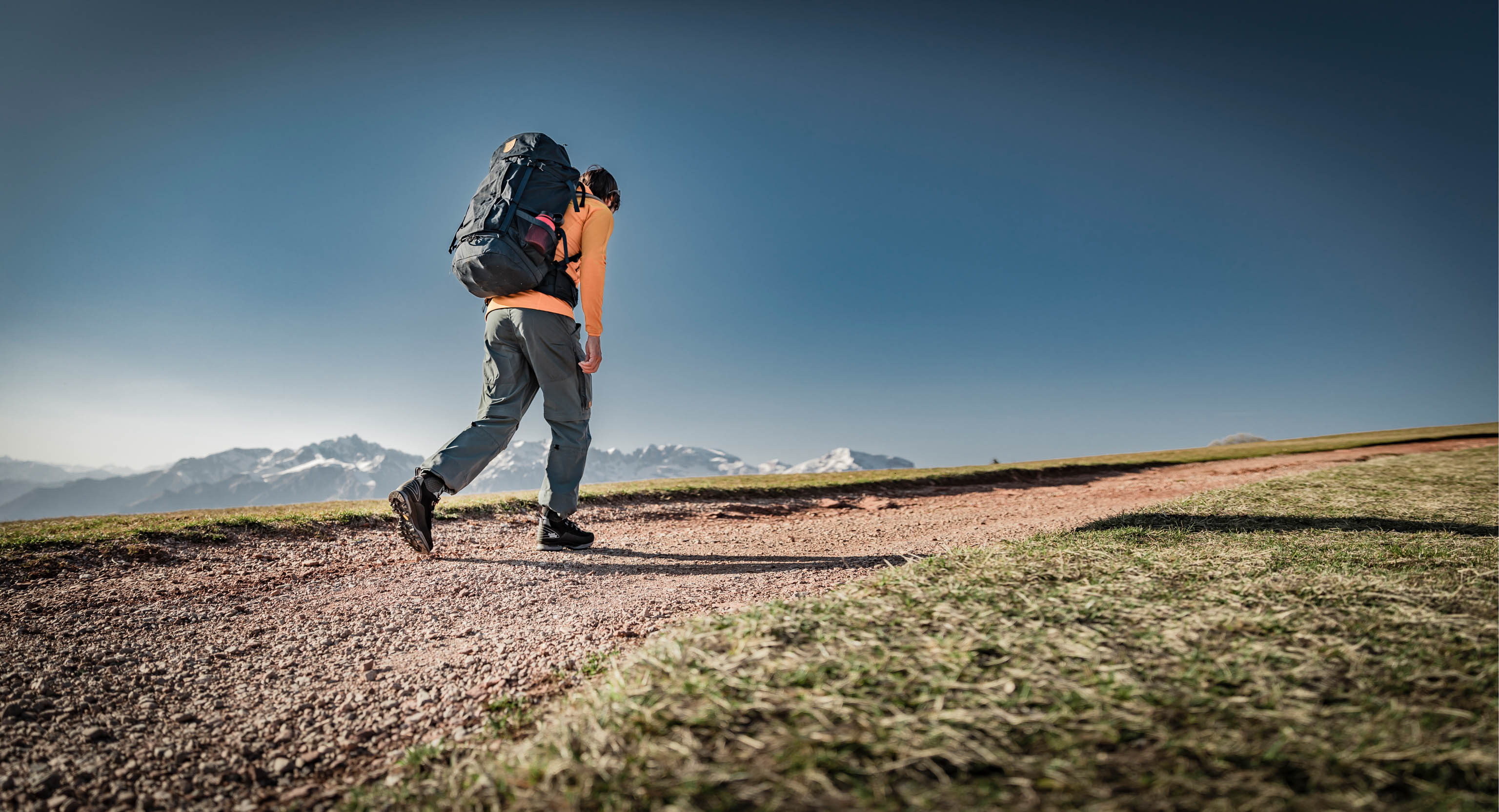
1 How to choose hiking boots – Categories A to D
We divide our hiking boots and mountain boots into categories A – D. Some models might cover two categories or sit somewhere in between. This is why the descriptions overlap.
The main criteria for this categorisation is boot torsional stiffness – how flexible the sole is lengthways and sideways. This ranges from very flexible (leisure footwear in Category A) to extremely stiff (Category D mountain boots).
The more flexible the sole is, the greater the roll-off. This increases the walking comfort. And vice versa: The stiffer the sole, the better the stability and support. This ensures surefootedness on uneven paths with stones, rocks and roots.
"As a general rule, the tougher the terrain, the stiffer the soles of your footwear."
Patrick Wolf, HANWAG Sales Germany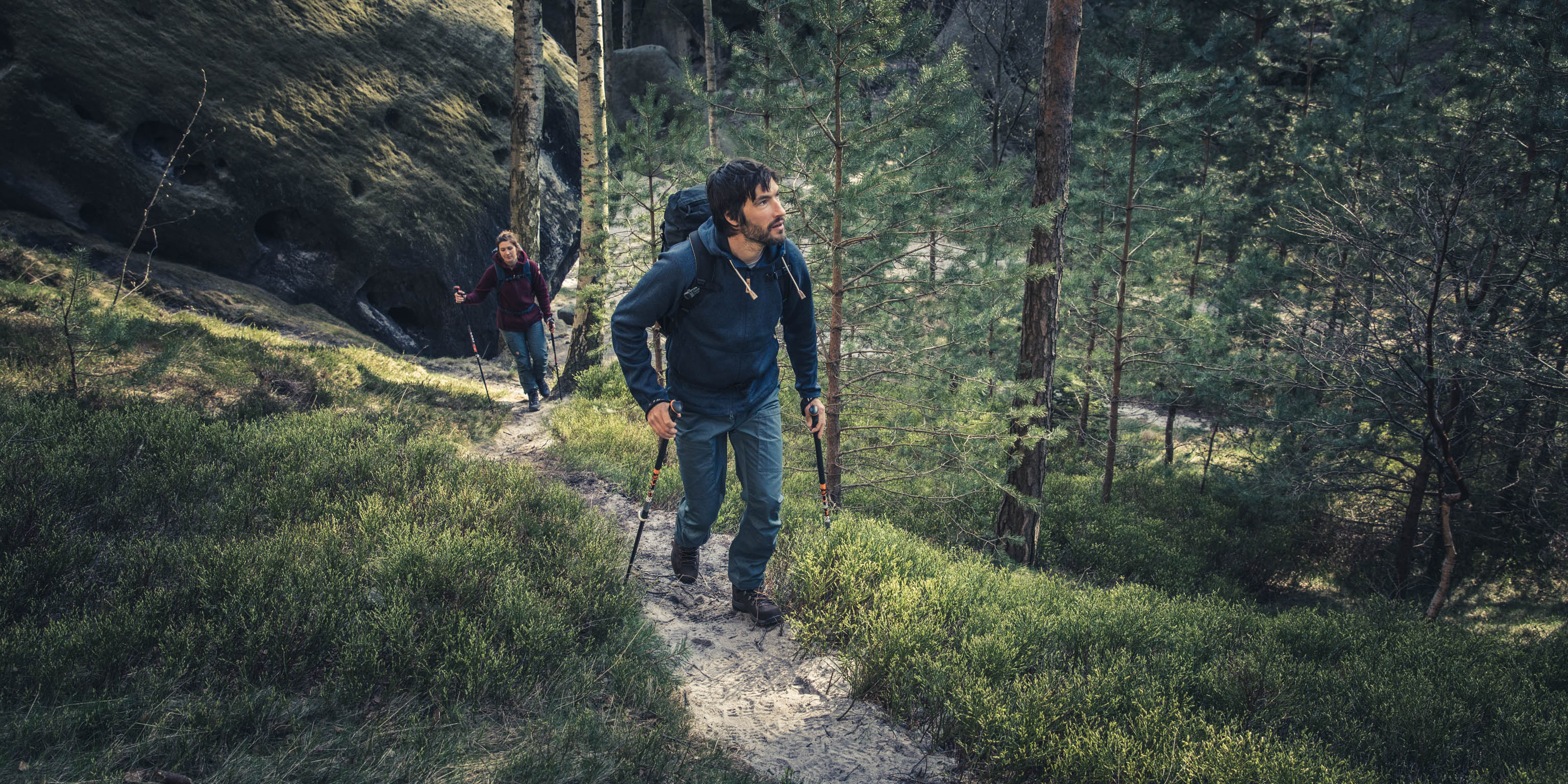
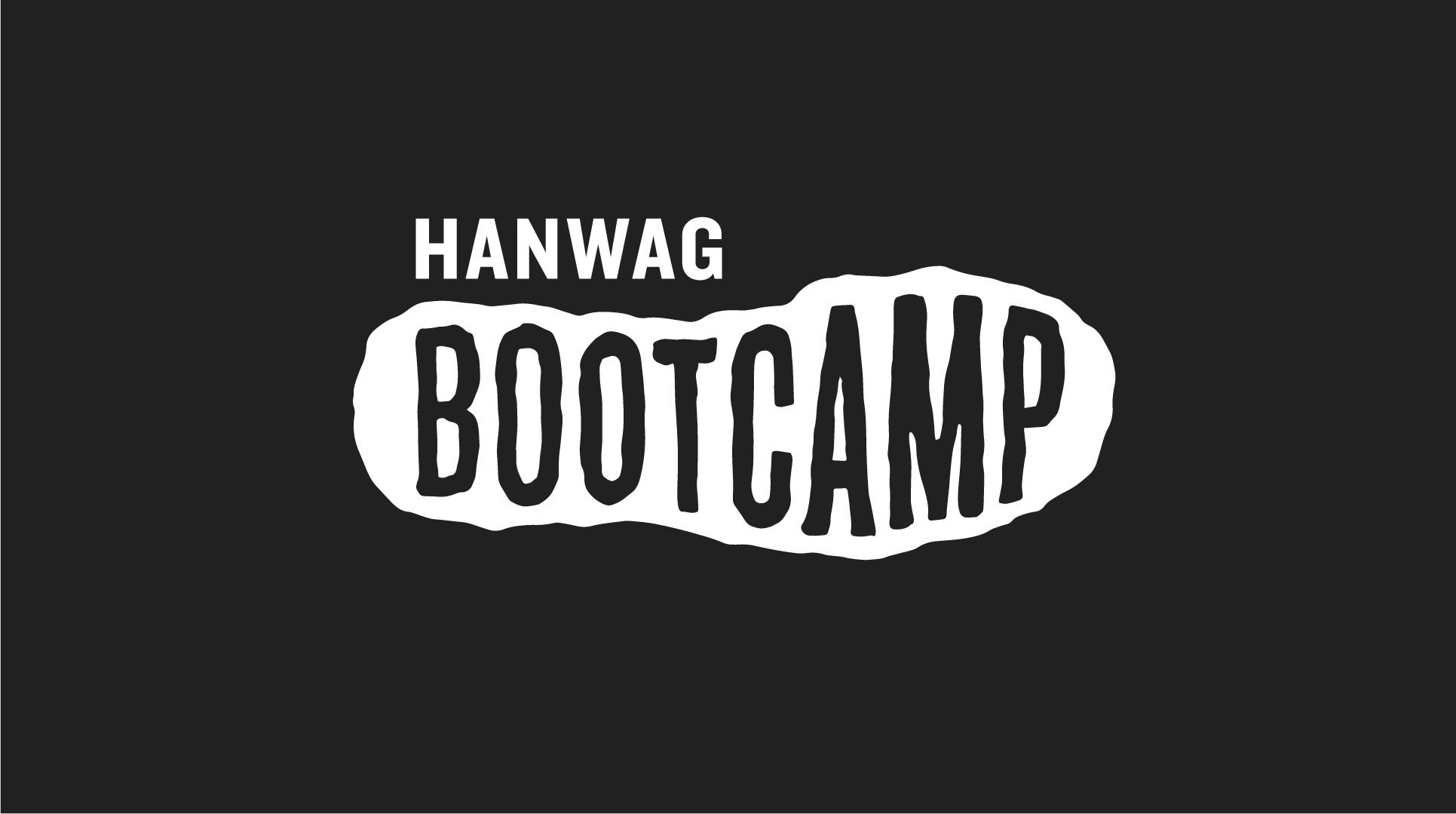
Expertise and know-how for your outdoor adventures – welcome to the HANWAG BOOTCAMP. Watch the how-to videos on our YouTube channel.
Outdoor footwear is influenced by a number of factors, such as the height of the uppers and flexibility. In addition, personal attributes, such as sure-footedness, individual physiology and pack weight also play an important role.
To help you best decide how to choose hiking boots, we divide our Hiking Boot Categories into six areas of use:
- Travel
- Hiking
- Trek Light
- Trekking
- Rock
- Alpine
2 Hiking boots vs hiking shoes - category overview
Category
Main attributes
Areas of use
Tours
Examples
A
- Very flexible sole
- Low-cut models
- Very soft/flexible upper material, mostly synthetic
- Travel/Hiking
Terrain:
- Asphalt
- Managed gravel paths
- Parks
- Walks
- Short hikes on good trails with a light pack
Example: City trip to Stockholm
A/B
- Flexible sole
- Low-cut or mid-cut upper
- Upper provides good freedom of movement
- Flexible upper material, generally more synthetic than leather
- Hiking/Travel
Terrain:
- Managed gravel paths and unmade gravel trails
- Moderate hiking trails in flat terrain, lower mountain ranges and the foothills of the Alps
- Half-day or whole day hikes with a light pack
Example: Hiking on easier trails in the Black Forest mountains
B
- Soles that offer a good compromise between flexibility (good roll-off) and stiffness (for more difficult trails)
- Mid-cut or high-cut upper that combines flexibility with stability
- Flexible, but stable upper material, often a mix of leather/synthetic
- Hiking/Trek Light/Trekking
Terrain:
- Moderate and difficult hiking trails in lower mountain ranges or the Alps
- Stony, rocky paths with tree roots
- Whole day hikes
- Longer hikes with a lightweight pack
- Mountain trails with a light pack
Example: Camino de Santiago with a light pack
B/C
- Stiffer sole with good cushioning
- Higher upper for ankle stability
- Robust and stabilising upper material, generally with leather
- Trekking/Alpine
Terrain:
- Stony, rocky paths with tree roots
- Moderate alpine terrain
- Long-distance trekking trails with a heavy pack and through mountain terrain or off-trail in the backcountry
- Mountain tours up to glacier crossings
Example: Trekking trips, such as the Kungsleden trail or the Sarek National Park in Sweden
C
- Very stiff sole
- Low-cut (approach shoe) or with a higher upper (via ferrata boot)
- Medium-stiff upper material, generally a mix of leather/ synthetic
- Some models are hybrid crampon-compatible
- Rock/Alpine
Terrain:
- Alpine trails
- Via ferrate
- Easier climbing routes
- Via ferrata tours
- High-alpine tours with significant sections on rock
Examples:
- Low-cut model: Day trip on sport via ferrata (e.g. Pidinger Via Ferrata, Germany)
- High-cut model: alpine tours and longer via ferrata tours (e.g. Via delle Bocchette, Italy)
C/D
- Very stiff sole
- Higher and more sturdy upper
- Robust and stabilising upper material
- Fully crampon-compatible
- Alpine/Rock
Terrain:
- Alpine trails
- Glaciers
- Easy climbing
- High-alpine tours
- High-alpine tours with glacier terrain
- High-alpine trekking
Example: Mount Kilimanjaro ascent
D
- Extremely stiff sole
- Very high and sturdy upper
- Thick and very robust upper material
- Insulates against extreme cold
- Fully crampon-compatible
- Alpine
Terrain:
- Alpine trails
- Rock and ice
- Glaciers
- Demanding glacier and summit tours with extreme heights
- High-alpine expeditions
Examples: Aconcagua (Argentina) or the Western Alps
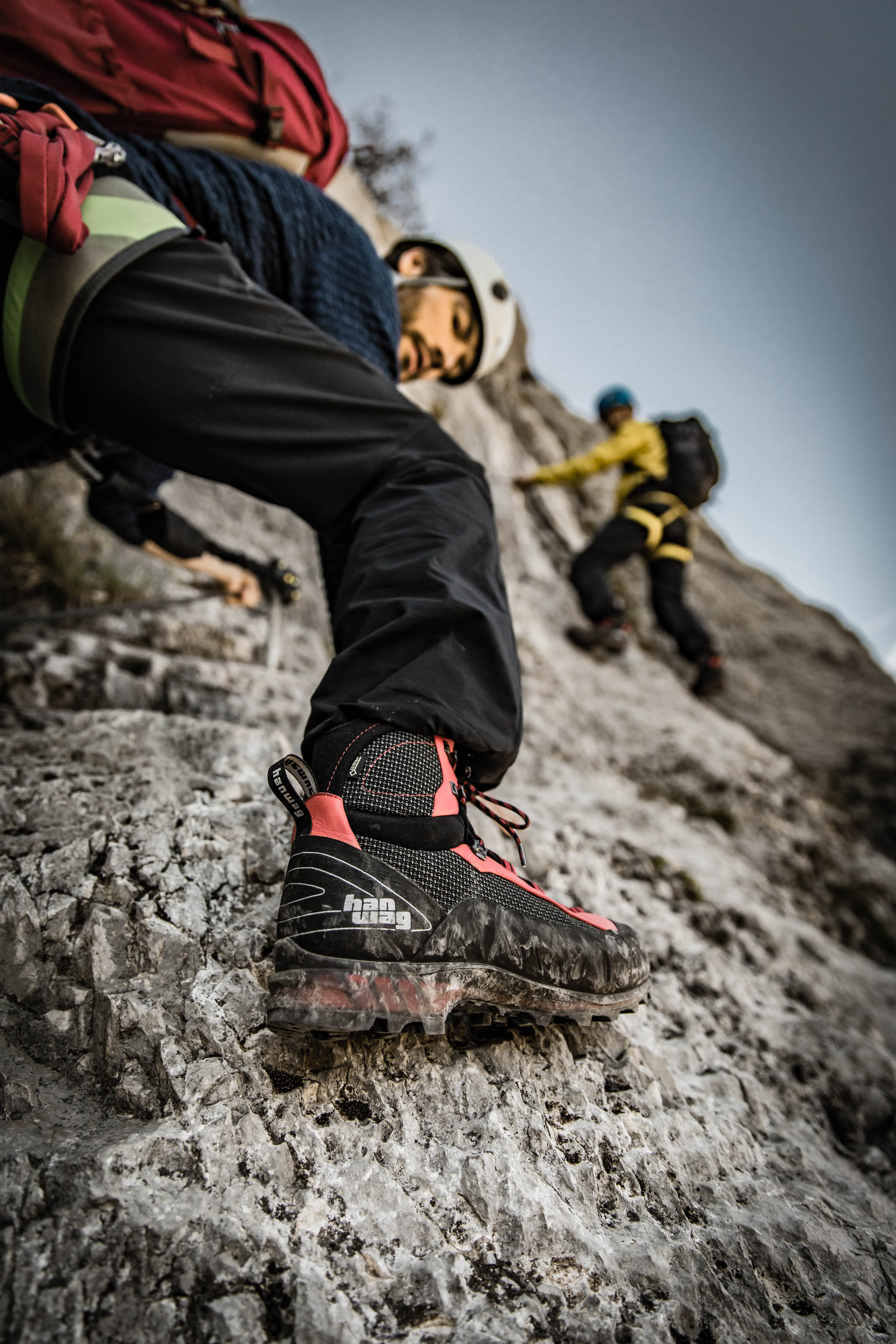
3 Special case: Category C mountain footwear
When considering how to choose hiking shoes, looking at the table you might think: The higher the footwear category, the higher the upper. However, Category C mountain footwear is an exception. Some models have a low-cut upper. Why? Because approach shoes are designed for the walk-in to rock faces and to climb in too, for example on a via ferrata.
For climbing, good ankle freedom of movement is more important than protection against twisting an ankle. This is why some via ferrata enthusiasts prefer to wear a low-cut model shoe that allows them to move more freely.
Category C footwear also has a very stiff sole – for the best possible precision on rock when climbing. This is what sets them apart from the low-cut models in Category A and A/B: Category A and A/B lightweight hiking shoes generally have a soft sole for maximum walking comfort.
In addition, Category C footwear is generally chosen to give a narrower fit. This is important as it enables you to climb with more precise footwork.
Find your HANWAG boot with our shoe finder
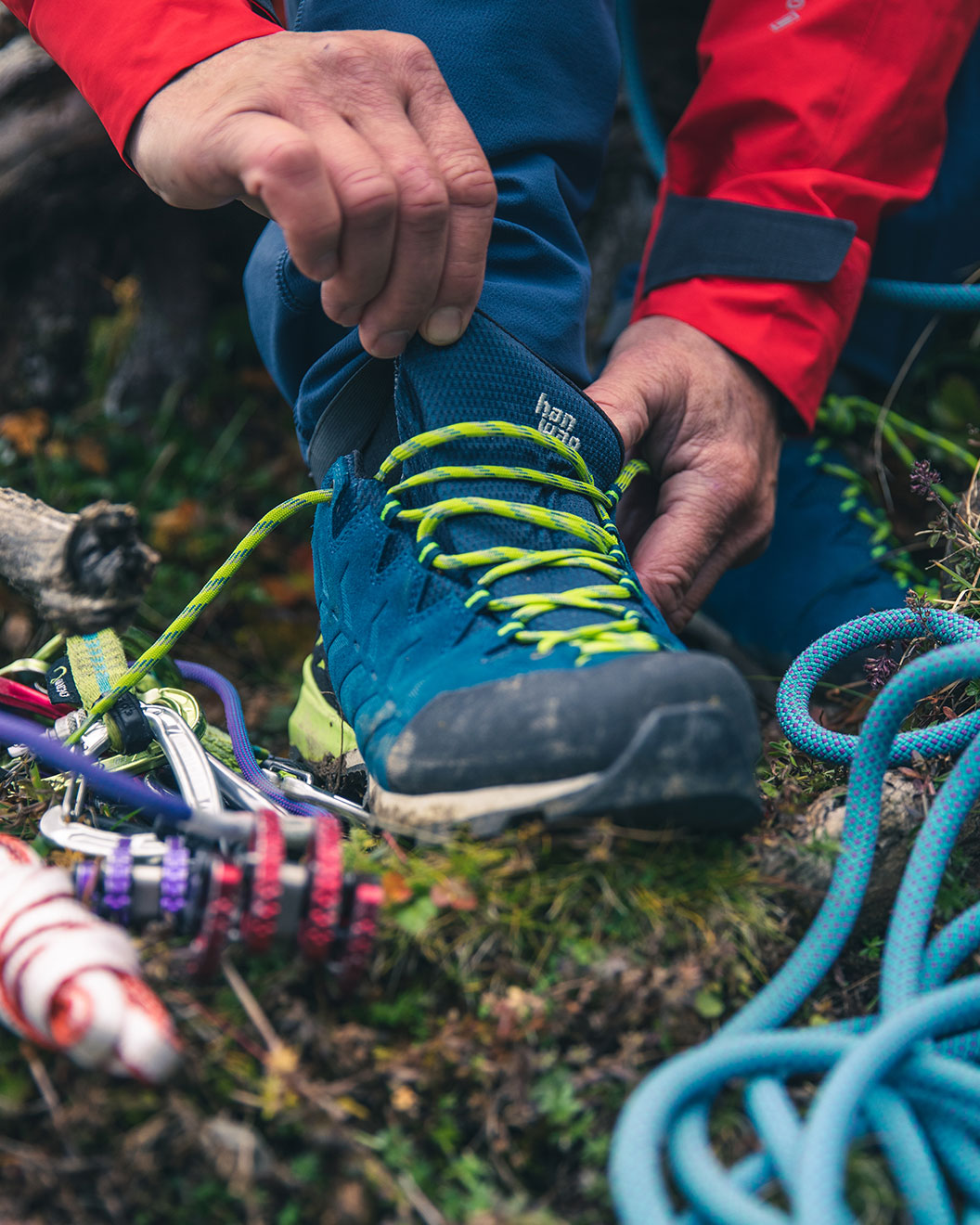
4 What are lightweight hiking boots?
When it comes to how to choose walking boots, more and more hikers and mountaineers are looking for lightweight hiking boots or lightweight mountain boots. This is perfectly understandable. After all, we have to lift our footwear with every step we take. Every extra gram on our feet requires more energy to move than if it was in our backpack.
This is why ever greater numbers of people see weight as one of the most important factors for hiking footwear. Their area of use would appear to be common sense. Lightweight hiking boots means light, easy hikes – right?
However, there’s more to a boot than how much it weighs. After all, a classic Trek Light boot with a leather upper (Category A/B) can weigh more than an Alpine mountain boot (Category C). There are a couple of reasons for this: The upper on a mountain boot often uses a higher proportion of synthetic material (which is lighter than leather). And their stiffer sole is generally thinner (and has less cushioning).
This means that weight is just one of many factors you should consider when asking: Which boots are right for me?
Always stay up to date: Subscribe to the HANWAG newsletter and become part of our community.
5 Which boots are right for me?
You now understand how hiking boot categories help you how to choose hiking boots and understand different shoe types. Naturally, there are a whole range of factors to consider in finding the right footwear:
- upper construction – how high should it be?
- features – for example, do you need a protective rubber rand?
- weight – although weight isn’t everything
- area of use – in particular, the type of trail plays a crucial role
- personal factors – such as sure-footedness and fitness
- your backpack – the heavier it is, the more sturdy your footwear should be
- expected weather conditions – and the resulting foot climate inside your boots
- appearance – after all, looks do count
- fit – fit is probably the most important factor. After all, the best boot in the world is not much use if it doesn’t fit properly
Anything we’ve missed out? Well, there’s also the price and value for money to consider. At HANWAG, we make hiking boots and outdoor footwear from the best materials using the highest quality shoemaking techniques.
A final piece of advice about our hiking boot categories for how to choose hiking shoes: if in doubt, go for the model in the next category up. Wearing unsuitable hiking shoes or mountain boots might overstrain your feet and cause ligament or tendon injury. They can also be a safety hazard, for example, if you twist your ankle while carrying a heavy pack. It’s better to be over-equipped and have a safety reserve on your tours.
We hope you have fun on your adventures, as far as your feet will carry you.

